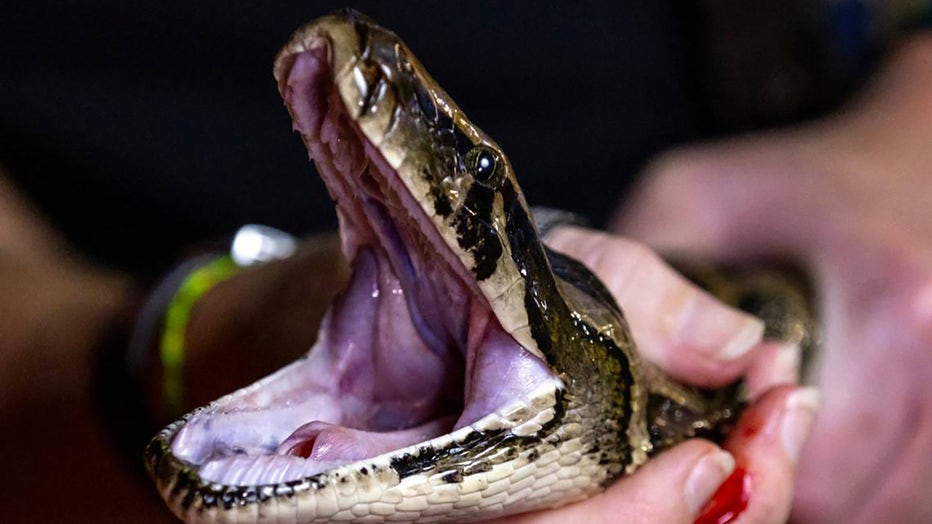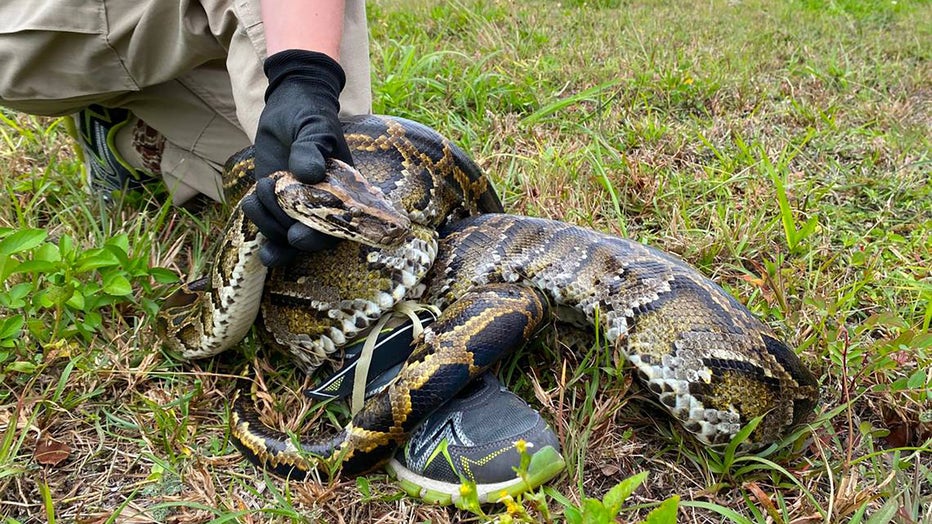Hurricanes Helene, Milton may have spread dangerous invasive species across Southeast
MIAMI, Fla. - As the Southeast recovers from Hurricanes Helene and Milton, experts warn that floodwaters from the systems may have accelerated the spread of invasive species, which can be detrimental to local populations of plants and wildlife.
According to the U.S. Geological Survey, 222 non-native species could have possibly spread during flooding from Hurricane Helene, and 114 species are being monitored for potential movement following Hurricane Milton.
The populations are a concern because they can lead to a disruption of agricultural production and harm native plants and wildlife.
Biologists say they are watching for species such as the giant applesnail, Asian swamp eels, Cuban treefrogs and alligatorweed.
Video: Blind dog finds blind python in Florida Everglades: ‘Another notch on her belt’
Each has their own unique impacts, including transmitting diseases, threatening commercial interests and costing governments and industries billions of dollars.

Python Huntress Amy Siewe holds an invasive 10-foot Burmese Python during a hunting trip down Tamiami Trail on Sept. 5, 2024, in Miami. The snake was originally caught by her colleague Harold Antonio Rondon-Mena. (D.A. Varela/Miami Herald/Tribune New
Through the use of detailed mapping, experts are able to identify areas that were impacted by flooding and are susceptible to the established non-native and invasive species.
"Once a species is introduced by spreading to a new location with suitable conditions, there is a possibility of that species establishing a population in its new environment," the USGS stated. "Especially for highly invasive species that are documented to rapidly grow and reproduce without the constraints from the environment where the species originated."
READ: Alligator spotted dragging massive Burmese python in Florida Everglades
Since Hurricane Harvey in 2017, the group has produced the maps to track the potential spread of species during the wake of major disasters.
According to experts, efforts have successfully tracked and warned about the emergence of the African Jewelfish, zebra mussels and water hyacinth across the South.

Burmese pythons are believed to have arrived in South Florida as pets in the 1980s and then were released by frustrated owners who got tired of feeding them mice and other live meals. (Miami Herald/Tribune News Service via Getty Images)
The Florida Fish and Wildlife Conservation Commission reports more than 500 non-native species are thought to call Florida home, with many originating from the animal trade.
Two of the more notorious species that have grabbed headlines in recent decades include the Burmese python and lionfish.
To combat the rising population, the state has advertised hunts, where participants often compete for rewards for capturing and killing the most invasive animals.
View maps of the invasive species spread from the USGS: Species maps.
Read more at FOXWeather.com.
STAY CONNECTED WITH FOX 13 TAMPA:
- Download the FOX Local app for your smart TV
- Download FOX Local mobile app: Apple | Android
- Download the FOX 13 News app for breaking news alerts, latest headlines
- Download the SkyTower Radar app
- Sign up for FOX 13’s daily newsletter

